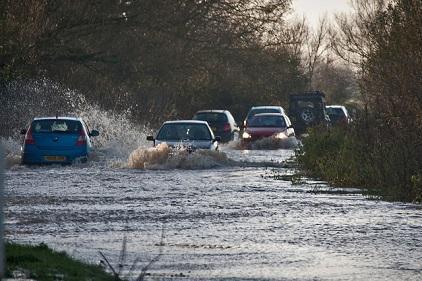
A flooded road road near Glastonbury, UK in 2012 (Creative Commons photo by Flickr user Mark Robinson)
By Robert Glasser
GENEVA, 9 August, 2017 - Until recently it has been well understood that the main drivers of weather-related disasters were increased exposure and vulnerability due to poverty, the breakneck pace of urbanization in low and middle income countries, population growth, the destruction of protective eco-systems and low institutional capacity to manage disaster risk.
It is generally accepted that climate change is in the mix, but it is often difficult to pinpoint the role it plays in specific disaster events. Over the last 20 years, some 90 percent of major recorded disaster events have been weather-related.
The Emergency Events Database maintained by the Centre for Research on the Epidemiology of Disasters, based at the University of Louvain, Belgium, recorded 6,457 weather-related disasters between 1995 and 2015. There has been a doubling of such events yearly over the last decade.
About 89 percent of the 606,000 lives lost in these events occurred not in Europe but in lower income countries where under-recording of disaster-related mortality remains an issue.
Now comes research published in The Lancet, which focusses on the possible impact of climate change in Europe and finds that weather-related disasters could affect about two-thirds of the European population annually by the year 2100 leaving as many as 351 million people exposed per year compared with 25 million people exposed per year during the reference period of 1981 to 2010.
It is a comprehensive investigation of climate and demographic changes focused on natural hazards which cause the most mortality and affect the highest numbers of people including heatwaves and cold waves, wildfires, droughts, river and coastal floods, and windstorms in a “business-as-usual scenario of greenhouse gas emissions.”
A key finding is that there could be a 50-fold increase in mortality annually, 3,000 deaths, by the year 2100. In southern Europe, currently suffering the ravages of the so-called Lucifer heatwave and associated wildfires, premature mortality linked to weather extremes could become the greatest environmental risk factor.